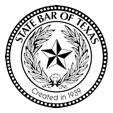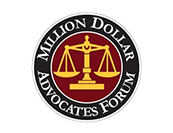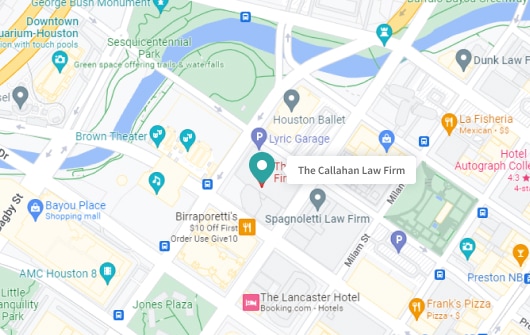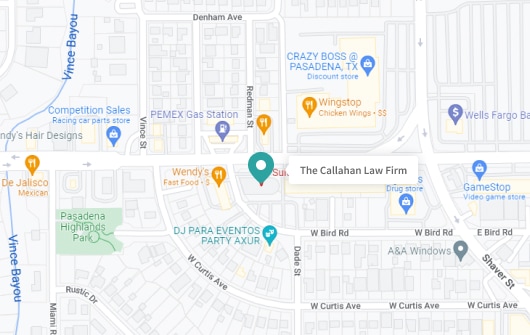Who is at Fault in a Self-Driving Car Accident in Texas?
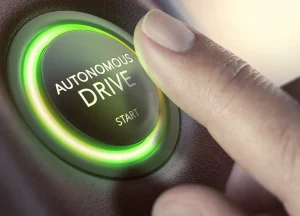
The emergence of self-driving vehicles introduces a unique blend of traditional negligence principles and cutting-edge technology. However, as self-driving technology advances, the landscape of car accidents has begun to evolve as well, presenting new challenges in determining fault.
Unlike conventional accidents, where human error typically dictates fault, self-driving car accidents often involve a nuanced examination of factors such as software malfunctions, sensor failures, and human intervention.
Navigating the legal complexities of such accidents requires knowledge and experience. If you need assistance in understanding your rights and seeking compensation after a self-driving car accident, don’t hesitate to contact the Callahan Law Firm for guidance and support.
Understanding Self-Driving Cars
Self-driving cars, also known as autonomous vehicles, are designed to operate without human intervention. They use a combination of sensors, cameras, radar, artificial intelligence (AI), and machine learning to perceive their environment, make decisions, and navigate roads safely.
Overview of the SAE’s (Society of Automotive Engineers) Six Levels of Automation
The SAE classifies self-driving technology into six levels (0-5), ranging from no automation (Level 0), where the driver controls the vehicle, to full automation (Level 5), where the car is capable of performing all driving tasks under all conditions without human intervention. Most of the self-driving cars we currently see on the road are considered level 2 or level 3.
The Goals and Benefits of Self-Driving Technology in Enhancing Safety and Efficiency
The primary goal of self-driving technology is to significantly enhance road safety by reducing human error, which is the leading cause of most traffic accidents. Additionally, self-driving cars aim to improve traffic flow, increase transportation efficiency, and provide mobility solutions for those unable to drive.
Factors Contributing to Self-Driving Car Accidents
Self-driving cars rely on complex technology that can sometimes fail or encounter situations it is not equipped to handle. Several key factors often contribute to accidents involving autonomous vehicles:
- Technological Failures: The sensors, software, and decision-making systems in self-driving cars can malfunction or make errors.
- Human-Technology Interaction Challenges: It can be difficult for human drivers to transition between autonomous and manual driving modes safely. Drivers may rely too much on automation and be unprepared to take control.
- External Factors: Adverse weather, poor road conditions, and infrastructure issues can impair the performance of self-driving systems. Sensors struggle in rain, fog, or snow. Poor lane markings, unexpected construction, and debris can also lead to problems.
- Algorithm and Sensor Limitations: The algorithms powering self-driving cars have limitations in how they interpret data. Edge cases outside the training data can cause errors. Sensors may also have blind spots and struggle to detect certain objects, like pedestrians at night.
- Cybersecurity Threats: Hackers could potentially compromise the controls and safety features of an autonomous vehicle. While rare, security experts warn about vulnerabilities that could be exploited to endanger users.
Comprehending the factors contributing to self-driving car accidents in Texas is essential for ensuring justice and compensation for parties injured in such incidents.
Determining Liability in Self-Driving Car Accidents
Determining liability in accidents involving self-driving cars introduces a new layer of complexity to the legal landscape surrounding automobile incidents. Here’s what you should know about liability in these situations:
The Human Driver’s Role
Even in the most advanced autonomous systems, humans have a crucial role in vehicle operation. In accidents involving partial automation, the driver may be held accountable if they failed to intervene when the system prompted them to, or they misused the autonomous features.
Developer Responsibility
The creators of autonomous systems are responsible for ensuring their products function safely. This includes testing for various scenarios, from common road encounters to rare and hazardous situations.
Regulatory Influence
The laws and standards around autonomous vehicles are still evolving. National and local regulations impact liability and insurance considerations. It is crucial to stay updated on the legal framework governing AVs in your area.
Insurance Adjustments
The rise of self-driving technology is necessitating changes in the insurance industry. Traditional auto insurance models may not be equipped to handle the unique risks associated with autonomous vehicles, so insurers must adapt policy structures to address these new challenges.
The Crucial Role of Data
When determining liability, data from the vehicle’s sensors, logs, and records become pivotal. This information can paint a clear picture of the events leading to the accident and can be used to build or defend personal injury claims. Understanding how to access and interpret this data is critical.
Overall, liability will depend on the specific circumstances and details of each accident. Consulting experienced legal professionals will be key to understanding liability issues and achieving fair outcomes.
Potentially Liable Parties in Autonomous Car Accidents
Responsibility for an autonomous vehicle accident is not always clear. It’s possible for multiple parties to share blame, adding a layer of complexity to settling such cases. Here’s who could be responsible:
Manufacturer/Developer Liability
If the accident can be traced back to a defect in the vehicle’s hardware or software, the manufacturer is likely to be at fault. This includes everything from faulty lidar systems to flawed programming that leads to incorrect decisions on the road.
Technology Supplier Accountability
In modern automobiles, several companies might supply the technology utilized in autonomous features. If a malfunction stems from a component or software provided by a third party, that entity shares in the liability.
Human Driver Negligence
Despite the presence of automation, the human driver is still legally responsible for the vehicle’s operation and has control over the vehicle. Not being attentive when required or failing to take control as instructed can result in the driver bearing some or all of the responsibility in an accident.
Owner and Operator
Just as with traditional vehicles, the owner or operator of an autonomous car must ensure it is properly maintained and that all software updates are applied. Neglect in these areas could lead to accidents for which the vehicle owner could be liable.
Third-Party Involvement
Sometimes, autonomous car accidents can be influenced by factors beyond the vehicle itself. Negligence in road design, the actions of other non-autonomous drivers, or even the behavior of pedestrians can contribute to or cause accidents, resulting in third-party liability.
Navigating the complexities of liability in autonomous vehicle accidents demands a comprehensive approach that considers all potential parties, which is why having legal assistance can be your guiding light during this time.
Seeking Legal Assistance for Self-Driving Car Accident Cases
Dealing with the aftermath of a self-driving car accident often requires legal guidance to tackle new and evolving issues in personal injury law.
The Complexity of AV Accident Cases
The novelty of self-driving technology brings a level of complexity to accident cases. Attorneys with experience in autonomous vehicle law understand the intricacies of this emerging field and can build a robust case for their clients.
Experience Matters
Seeking out a law firm with specific experience in handling cases related to self-driving car accidents is vital. These professionals can leverage their knowledge and precedents to secure a favorable outcome.
The Callahan Law Firm’s Can Help
In Texas, The Callahan Law Firm leads the charge in providing comprehensive legal assistance to those affected by autonomous vehicle accidents. Our attorneys are highly versed in the nuances of liability in these cases and can guide clients through the legal maze to ensure proper compensation is obtained.
In the evolving landscape of self-driving technology, The Callahan Law Firm is ready to be your advocate, ensuring that you receive the justice and compensation you deserve.
Contact The Callahan Law Firm Today!
As self-driving technology continues to advance, the potential for accidents remains a significant concern. Understanding liability in self-driving car accidents is crucial for achieving justice in these complex scenarios.
Our team is committed to staying updated on the latest developments and legal precedents in autonomous vehicle technology to ensure our clients receive the most informed and effective representation possible. Contact us today to schedule a free consultation with a Houston car accident lawyer.
FAQ:
Can you sue Tesla if Autopilot fails?
Yes, if the Autopilot system of a Tesla vehicle fails and is found to be the cause of an accident you were involved in, it is possible to sue Tesla. However, these cases require extensive investigation into the circumstances of the failure and the other circumstances of the accident. It’s possible that something other than the autopilot was to blame for the accident as well, so it’s important to conduct a thorough investigation.
How many crashes has Tesla autopilot had?
The National Highway Traffic Safety Administration (NHTSA) initiated an investigation into Tesla’s Autopilot system in 2021, following 11 incidents where Teslas using Autopilot collided with parked emergency vehicles. Upon concluding the investigation, NHTSA reported a significantly higher number of Autopilot-involved crashes than initially reported, totaling 467. These incidents resulted in 54 injuries and 14 fatalities.
Who is responsible for a self-driving car?
Responsibility for a self-driving car accident can be complex and may involve the vehicle’s manufacturer, the software developer, and possibly the human operator, depending on the circumstances. Liability is determined based on whether the accident was caused by a system malfunction, a failure in software programming, human error, or a combination of factors.
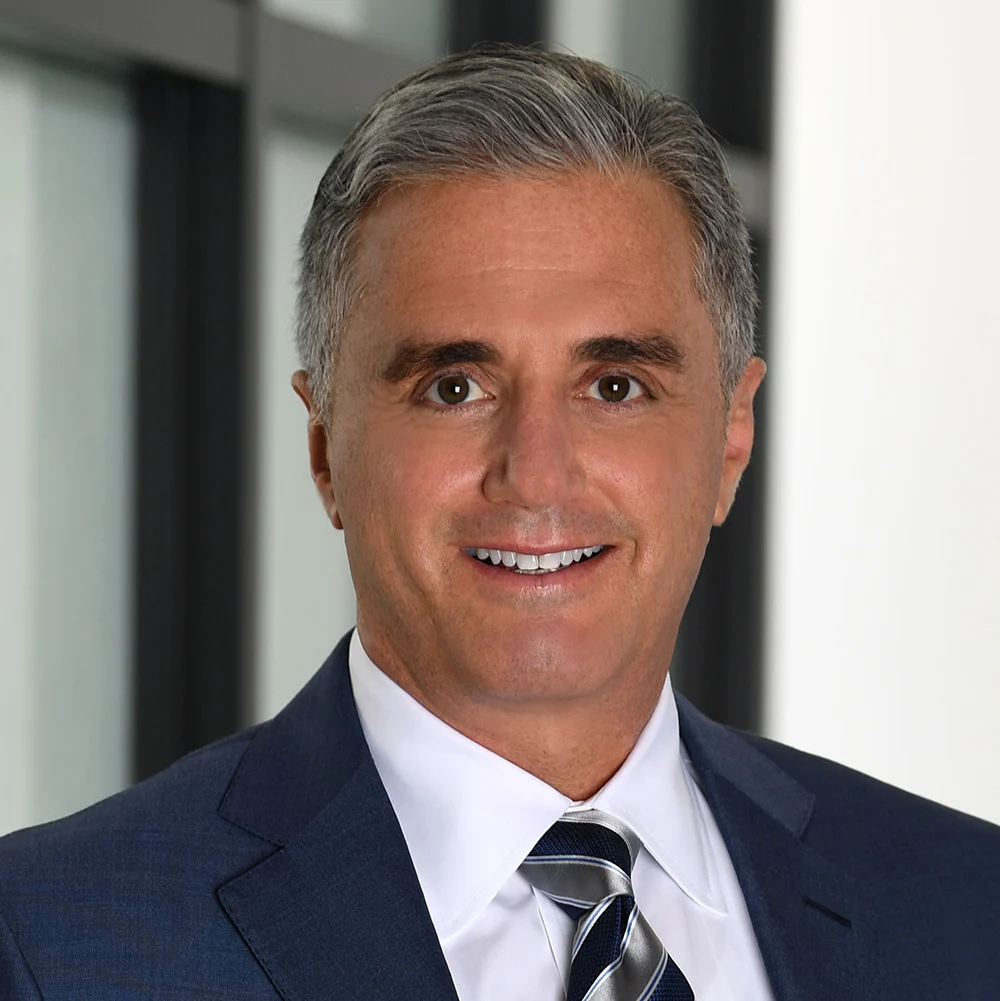
Michael S Callahan is an attorney and founder of The Callahan Law Firm. He focuses his practice on representing individuals and families in personal injury cases involving motor vehicle and truck accidents, workplace accidents and defective products. With over 25 years of experience, he is dedicated to fighting on behalf of people whose lives have been forever altered by the negligence and carelessness of corporations and individuals. Originally trained as a mechanical engineer, Michael has been practicing law and fighting for justice for those who need it most since 1994. He is board-certified in Personal Injury Trial Law by the Texas Board of Legal Specialization and a member of various esteemed legal associations. Outside of work, Michael enjoys spending quality time with his family, outdoor activities, and continually striving to improve as a trial lawyer and human being.



